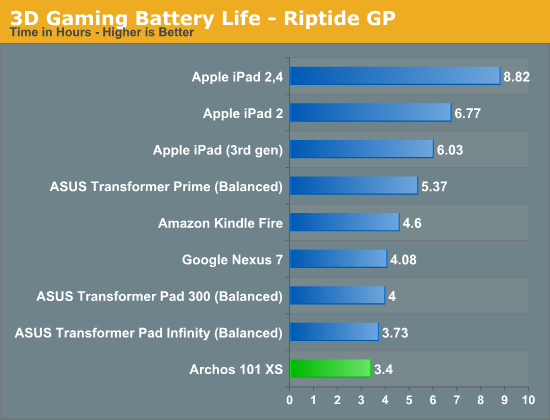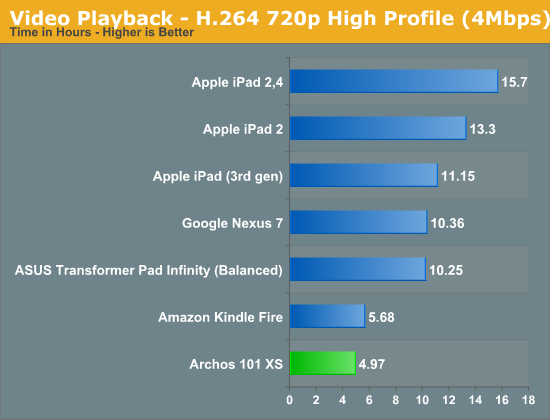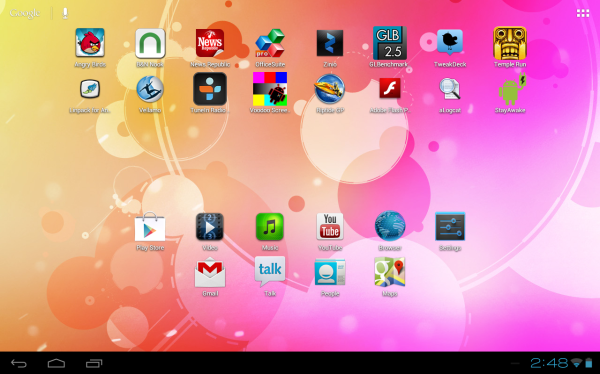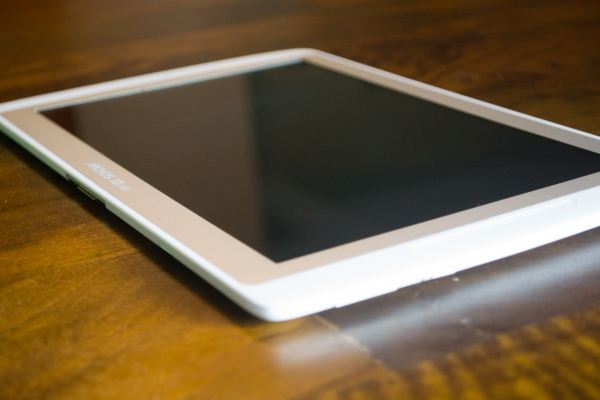The Archos 101 XS Review: Prettier, Faster, So Much Better
by Jason Inofuentes on August 22, 2012 12:15 PM ESTSoftware
Archos has taken an approach to software development that has favored performance by leveraging every hardware advantage possible, and ignoring the urge to muddy the UI with their own skins and widgets. This we knew from their G9s and that persists in the XS. During our interviews with the Archos team leading up to our G9 reviews we also learned that they were committed to maintaining software parity with the G9s even well after successor devices had been released. The release of Jelly Bean has put that promise in a bit of jeopardy but, what we do know is that Archos will still aim for software feature parity across the two lines. That’s not to say they aren’t going to try to get Jelly Bean onto the G9s, simply that their first priority must be to get Jelly Bean optimized for the XS, and then they’ll set their resources onto the G9 build.
I’m hopeful, though. The decision to remain on OMAP 4 has the benefit of being able to use unified source code from which the G9 and XS firmwares are derived. So, once the XS Jelly Bean build is completed, the delta from that to a G9 optimized version of Jelly Bean is much smaller than if the two devices were running entirely different architectures. But even if Jelly Bean doesn’t make an appearance on the G9, Archos remains committed to bringing any optimizations from their Jelly Bean source that could benefit the G9 over to their ICS builds.
As to when that Jelly Bean build for the XS is going to happen . . . Well, it’s not clear, but Archos is hopeful that it could be sometime this fall, which is pretty aggressive considering how late in the summer the XS is being released. As soon as we have an update from Archos on that we’ll pass it on.

As far as this ICS build, well, it is actually a pre-release build and in some ways that shows. Archos has been dinged in the past for some issues with touch performance, and that seems to persist. There’s a significant component of that issue which is due to the hardware, but with the hardware finalized the only way to see any improvement in it is through software updates. Otherwise the UI and software is just like the current firmware for the G9s, with a stock UI and a custom media suite. The massive codec support that impressed us in the G9 remains intact, though that support does not extend to the stock player, only Archos 's own player. This does lead to some curious issues where a particular file won’t play on the Archos player, but plays just fine under the stock player. We’re not sure why the disparity, but so far we haven’t run into a common codec combination that wouldn’t play in either player, so most of your ripped content should playback just fine.
Battery Life
The bulk of the volume and weight of a given tablet is usually the battery. This is certainly true for the Archos 101 XS, whose slim frame is filled with a 25 Whr battery, matching the Transformer Prime, and nearly 10 Whr bigger than the Nexus 7. Like performance, though, battery life owes as much to the software, as it does to the hardware.
Our first test is typically the web browsing test, which cycles through 20 common webpages and tries to foil any caching strategies too ensure that the appropriate radios are activating. Unfortunately, with this pre-release software we encountered some browser instability during testing. We didn’t have any issues with the browser during day to day use, and we’ll update the review once we have a software build that resolves this issue. So, we’ll move on.

The 3D Gaming test is a new one, but one that should give an accurate estimation of the amount of time you can expect to spend playing an graphics intensive game on a given tablet. And things don’t look great for the 101 XS. The OMAP 4470 remains a 45 nm part, so there’s no rewards netted over the prior generation Archos tablets from a process switch. The SGX544 not only retains the higher clock speeds of the SGX540 in the OMAP 4460 (384 Mhz) but it also adds components, so the resulting increase in performance comes at the cost of playtime. It’s not necessarily a bad trade off, as performance is significantly better.

Our video rundown test has been updated, and involves the simple act of looping a movie with the brightness set to 200 nits. In talking to Archos, their testing put this test in the vicinity of 6+ hours; the difference being that they test at 150 nits of brightness to our 200 nits. The bright side of their result is that there are power savings to be gained in lowering the brightness if you can stand it. Otherwise, keep a charger handy.
It's notable that several of the tablets in these charts have 10.1" displays backed by ~25 Whr batteries, so this isn't an issue of battery size. Archos has squeezed a lot of battery into a thin frame. The component power cost is just too high. The display may be inefficient, or the SoC not so quick to spool down, but the video test may point to a bigger issue. Like most modern SoCs TI's OMAP 4 architecture includes explicit video decode IP so that no AP or GPU cycles are used for video playback. The AP and GPU may remain active to handle background tasks or draw UI components for the video player, but even some of that should be handled by the low-power Cortex-M3 cores and the Composition GPU. It's likely that the aggressive governor set by Archos to ensure performance goals is keeping things spooled up a little more than necessary. ASUS' approach has been to offer user controllable governors, and it's an approach that could pay off for Archos, as well.












44 Comments
View All Comments
scavio - Friday, August 24, 2012 - link
Both the Galaxy Nexus and Nexus 7 got Jellybean at essentially the same time, the Nexus 7 just happened to launch with it.JasonInofuentes - Thursday, August 23, 2012 - link
The question isn't whether it undercuts the price of having a keyboard, it's the value of that total package. I think many would argue that the TF300 with keyboard is a better value because the TF300 is an overall better package, AND the keyboard has massive supplemental battery. The other comparisons creep a little too close to what one could be paying for a fair Ultrabook. Those then become a choice between sacrificing performance for portability or paying more for a better notebook-style device. So, yes, we should have perhaps spent more time discussing the value add that a bundled keyboard brings, we're just not sure how much the keyboard will add to the experience. If you read the other reviews out there, opinions on the keyboard are pretty scattered. Some hated it. Others loved it. I didn't mind it.As for the prospects of a big Q4 for OMAP 4470? We don't like to speculate on what SoC will find a home in rumored devices, but let's consider that TI's place in the release cycle is last. NVIDIA has set a very fast tempo, though they've had two generations of A9 SoCs. Qualcomm is equally fast, and have already premiered their A15-class SoC, and working towards releasing their second iteration. Samsung is preparing Exynos 5 for an early '13 release, and have rolled out Exynos 4 Quad to sate us until then. And TI will have OMAP 5 in early '13, but has OMAP 4470, an SoC we reported on a year ago, to fill the gap.
There's nothing wrong with OMAP 4470, indeed it should give us a good picture of what OMAP 5 should look like. The inclusion of the CGPU and the focus on 'smart multicore' versus simply squeezing more A9 cores into the device is something that might win it more design wins in the mid-range space. Though SoCs only add a small amount to bill of materials, there's likely a premium, based on availability, in putting a quad-core SoC in your device versus a dual-core SoC. We do know that OMAP 4470 will see a lot of play in the Windows RT space. And in talking with TI they seem excited about this Fall, so perhaps you're right; perhaps we will see some TI-driven Nexus devices, and a myriad of other brands. I just don't think they'll be in the highest end devices.
yyrkoon - Monday, August 27, 2012 - link
TI is great to work with in the embedded field. Their hardware is not bad, and they do a lot of the development grunt-work for would be designers. Offer great, and sometimes free software tools . . . Plus they contribute a lot in some areas to the OSS community. For their products of course.So yeah I have to think TI based parts are going to be seeing a lot of play in future embedded applications. This makes me excited too. Since I really enjoy working with TI hardware.
Malphas - Saturday, August 25, 2012 - link
Or are they just jumping on the bandwagon? I owned a G8 tablet and it was completely solid, as well as dirt cheap and running a stock ROM with no bloatware refreshingly. It would be more enlightening to hear what percentage of G9 users - and Archos users in general - are satisfied/unsatisfied with their devices rather than just people badmouthing them on forums based on reviews but no actual experience with the product.